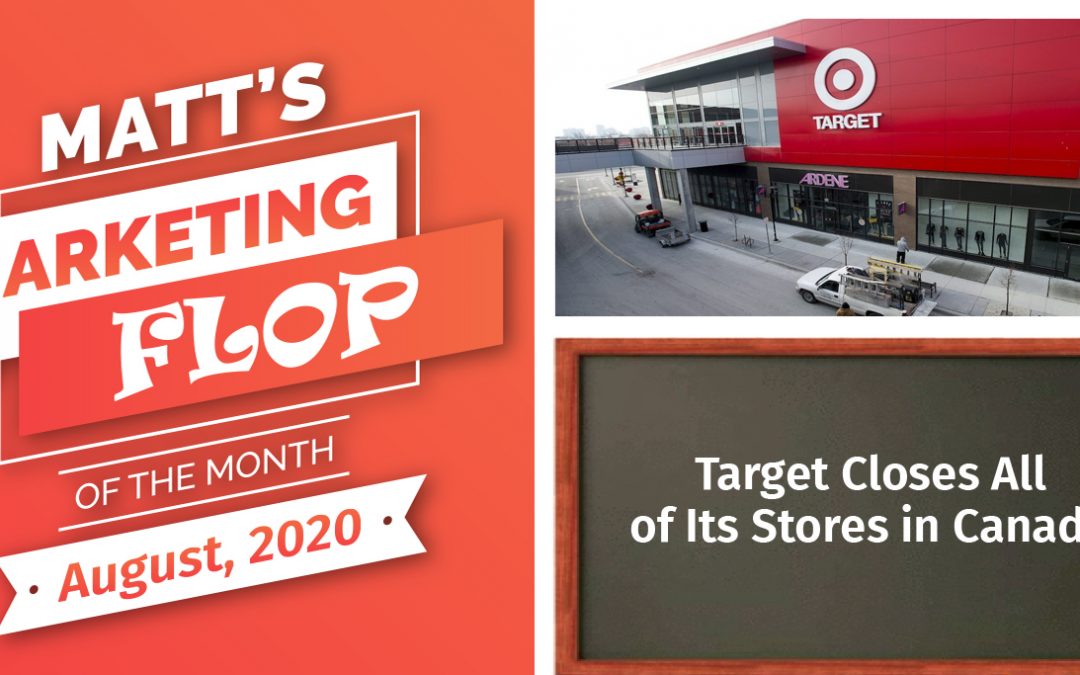[sb name="top-banner"]
[sb name="top-flops"]
In March, 2013, Target opened its first of 133 stores in Canada.
By April 12, 2015, it had closed every last one of its 133 stores Canada.
That's right, in 2 years, Target opened and closed 133 stores in Canada.
Ask the average Canadian what they thought about Target, and most remember "empty shelves." However, some will admit they loved Target, even more than Walmart who has been in Canada since 1994.
Either way, Target made a huge gamble in their Canadian expansion, and lost.
Why?
First and foremost, Target didn't analyze their new situation under a microscope. Instead, they opened as many stores as possible, as quickly as possible, instead of moving the needle of expansion in increments, and testing every step to make arrangements for the next.
You see, despite Target's success in America, there are so may variables involved in moving to a new country that you almost can't count on one single success factor you've had in the past. This is because the average foreigner, or in this case Canadian, thinks and shops differently than the average American.
As a result, the fundamentals for growing a successful business are the same they have always been: Start small, and analyze and adjust EVERYTHING as you move forward.
Ray Kroc began with one McDonalds, as did Sam Walton. They meticulously tested every aspect of their marketing and operations before having the confidence to scale on the level Target did in Canada.
Among the many obstacles Target encountered in Canada was:
- A pricing war with Walmart. As Kmart learned during Sam Walton's early days: Your retail store doesn't win a price war against Walmart.
- Target bought the store locations from another store who failed on a massive level. While I'm sure Target executives could find every reason that this failing was due to operations and not location, the stain of a failed location is intangibly felt within the buying behavior of all local consumers, and nobody enjoys visiting a loser.
- Because of the rapid store openings, the inventory system wasn't good enough to keep up. The result was empty shelves, disappointed Canadians, and no profits.
Empty shelves in a Canadian Target.
Due to all of these unfortunate circumstances, there is something to be said for launching something slowly, and letting it grow geographically as well as viscerally before you expand to dramatically. You have to grow in consumers' minds before you can grow in consumers' communities.
At the end of the day, it was a big marketing flop, and one that not many people may have predicted. If Target had been successful, it would have been one of the most celebrated marketing campaigns ever. But it failed, so we learn from it and move on.
[sb name="newsletter"]
More Marketing Flops
Netflix: Prices Rise, Value Plunges
[sb name="top-banner"] [sb name="top-flops"] On July 12, 2011, Netflix CEO Reed Hastings announced a new pricing model separating its streaming service from DVD-rentals. The combined subscription that had previously cost $9.99 was split into two separate plans at...
Little Caesars: From #2 to #4 in Pizza
[sb name="top-banner"] [sb name="top-flops"] In 1994, Little Caesars was the #2 pizza chain in America (just behind Pizza Hut) with $2 billion in annual sales. In 2010, it was number four, with half as much revenue. Here is the breakdown of pizza market leaders in...
Get My Free Updates
Maverick was listed by Forbes as the #1 Consultant Who Avoids the B.S."

